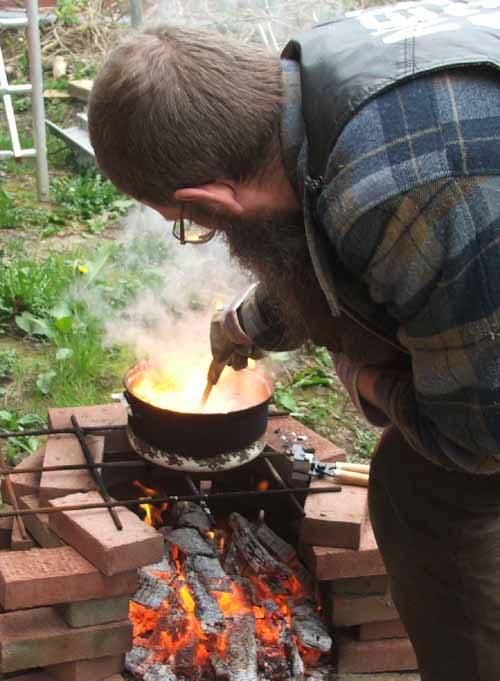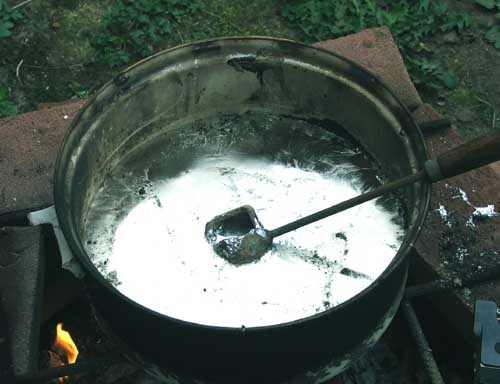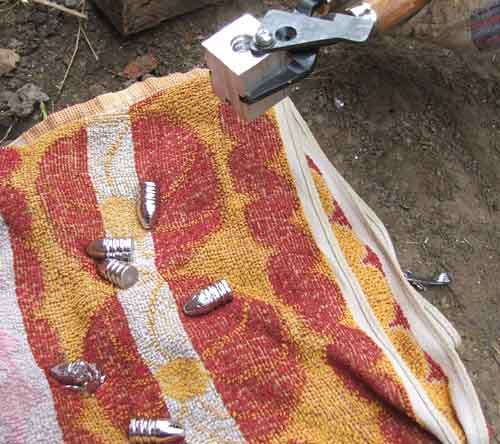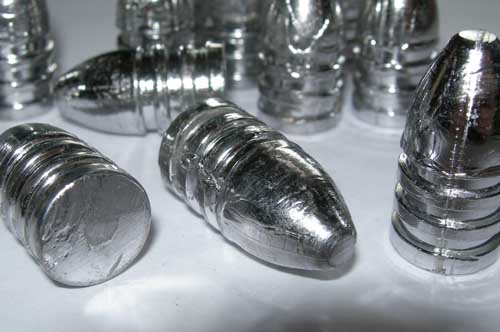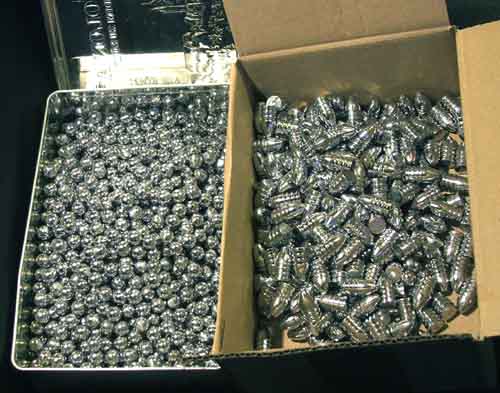Steve Swartz
Member
So I read up all the threads I could about casting, googled up some expert advice, bought the equipment, and it finally stopped raining last night.
1) I bought the Lee Production Pot IV cause I'm casting .36 cal RB; don't need a lot of capcity, right? Guess what- the ingots I bought for casting won't fit in the pot! D'OH! So my 500W pot is churing away while I'm chopping up lead blocks with a mallet and chisel . . . [solution: I am melting down large ingots into smaller Lyman 1-lb ingots. This means I am melting, and making ingots (losing a bit of lead in the process) and will have to melt again to make the balls. Any issue with melting/remelting/etc.?]
2) So I finally have a bunch of liquid lead in a pot with a huge layer of multicolored "scum" on top. What's up with that? I dropped in a pinch or two of flux and after some smoky outgassing ended up with a little floating island of some black crusty stuff which I scooped out and discarded. [ladle was also too big for pot! Wife won't miss that stainless steel spoon I hope] After fluxing, still had crusty layer on top. Crusty layer on the valve rod. Crusty layer on the thermometer. And after finishing, crusty stuff stuck to inside of pot etc. Is this just lead oxide? Throw away? Remelt? How do I scrape that stuff off of all my tools? It looks a lot like electrical solder but is much tougher and harder . . .
3) Finally went ahead and started pouring (bottom spout) into my 2-cavity mold. WOO-HOO! Well, Important Safety Tip: don't forget to *completely* degrease the mold assembly . . . had some residual oil under the sprue plate which oozed/seeped/burned into the cavities. Also- beginner mistake- I guess the proper way to use a 2-cavity mold is to alternate pouring/sprue cutting/dropping between the two cavities? After pouring one cavity, the pour spout sealed up and wouldn't pour again for about 30 seconds. Finally got in a rythm and seemed to be able to just go back and forth between cavities at a constant pace . . . is this the right technique?
4) Temperature control: I read somewhere that for pure lead (what I am using) around 600 degrees is a good temperature. Well . . . see comments about small pot/big ingots . . . I had to "crank that sucker up to 11" just to get some melting, and then never could get the lead back down to 600 degrees without the surface crust getting deeper and thicker. So for a small pot, there seems to be a tradeoff between the temperature and ability to actually use all the lead? At the end of the session, I had a big bunch of "slag" (see above) that seemed to be wasted. Is this normal? Or just bad temperature control?
oh yeah and wood particles from my mallet kept falling in the pot every time I tapped the sprue cutter. I guess holding the die over the pot so the sprue falls back into the melt is not such a hot idea either, contamination-wise!
Anyhow
Great fun . . . and nothing says "Oh Sh*t" like a stuck spout valve! (the patio will never look the same again)
Steve in North Texas
1) I bought the Lee Production Pot IV cause I'm casting .36 cal RB; don't need a lot of capcity, right? Guess what- the ingots I bought for casting won't fit in the pot! D'OH! So my 500W pot is churing away while I'm chopping up lead blocks with a mallet and chisel . . . [solution: I am melting down large ingots into smaller Lyman 1-lb ingots. This means I am melting, and making ingots (losing a bit of lead in the process) and will have to melt again to make the balls. Any issue with melting/remelting/etc.?]
2) So I finally have a bunch of liquid lead in a pot with a huge layer of multicolored "scum" on top. What's up with that? I dropped in a pinch or two of flux and after some smoky outgassing ended up with a little floating island of some black crusty stuff which I scooped out and discarded. [ladle was also too big for pot! Wife won't miss that stainless steel spoon I hope] After fluxing, still had crusty layer on top. Crusty layer on the valve rod. Crusty layer on the thermometer. And after finishing, crusty stuff stuck to inside of pot etc. Is this just lead oxide? Throw away? Remelt? How do I scrape that stuff off of all my tools? It looks a lot like electrical solder but is much tougher and harder . . .
3) Finally went ahead and started pouring (bottom spout) into my 2-cavity mold. WOO-HOO! Well, Important Safety Tip: don't forget to *completely* degrease the mold assembly . . . had some residual oil under the sprue plate which oozed/seeped/burned into the cavities. Also- beginner mistake- I guess the proper way to use a 2-cavity mold is to alternate pouring/sprue cutting/dropping between the two cavities? After pouring one cavity, the pour spout sealed up and wouldn't pour again for about 30 seconds. Finally got in a rythm and seemed to be able to just go back and forth between cavities at a constant pace . . . is this the right technique?
4) Temperature control: I read somewhere that for pure lead (what I am using) around 600 degrees is a good temperature. Well . . . see comments about small pot/big ingots . . . I had to "crank that sucker up to 11" just to get some melting, and then never could get the lead back down to 600 degrees without the surface crust getting deeper and thicker. So for a small pot, there seems to be a tradeoff between the temperature and ability to actually use all the lead? At the end of the session, I had a big bunch of "slag" (see above) that seemed to be wasted. Is this normal? Or just bad temperature control?
oh yeah and wood particles from my mallet kept falling in the pot every time I tapped the sprue cutter. I guess holding the die over the pot so the sprue falls back into the melt is not such a hot idea either, contamination-wise!
Anyhow
Great fun . . . and nothing says "Oh Sh*t" like a stuck spout valve! (the patio will never look the same again)
Steve in North Texas



